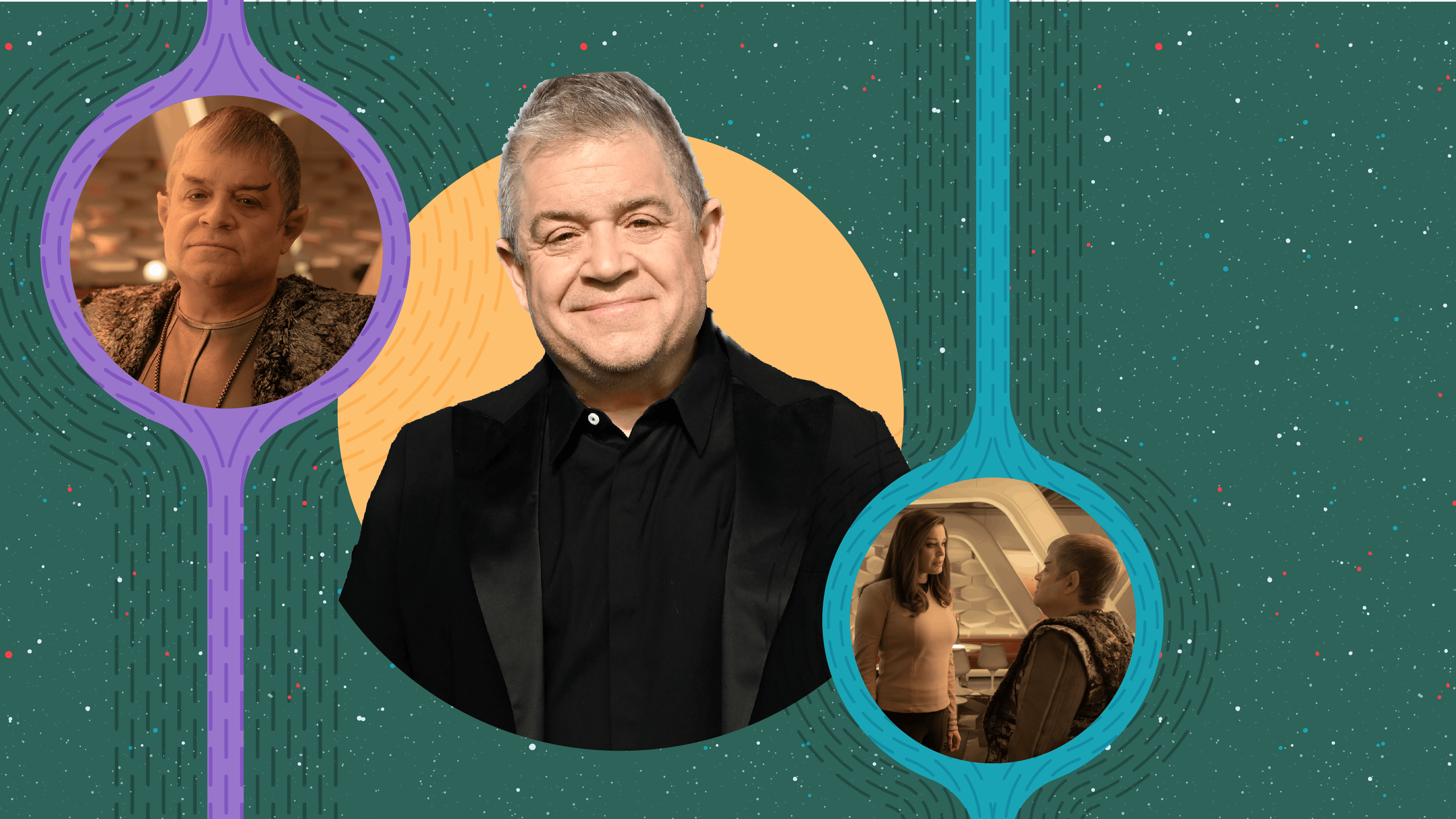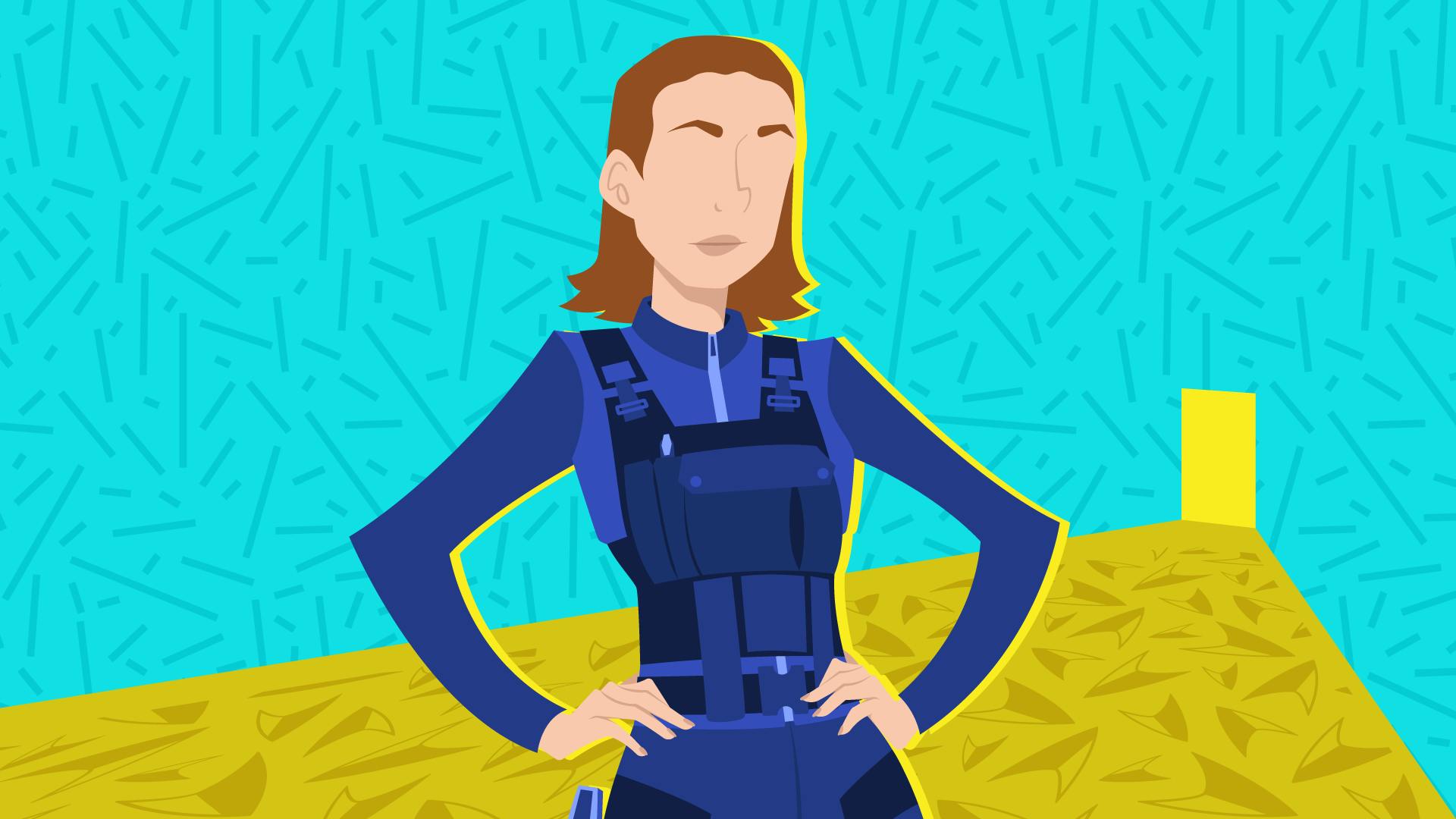Published Aug 30, 2024
Living Star Trek: How Two Women Breathed New Life into the Franchise
Without social media or the internet, Jacqueline Lichtenberg and Jean Lorrah made miracles happen to bring fans closer together.
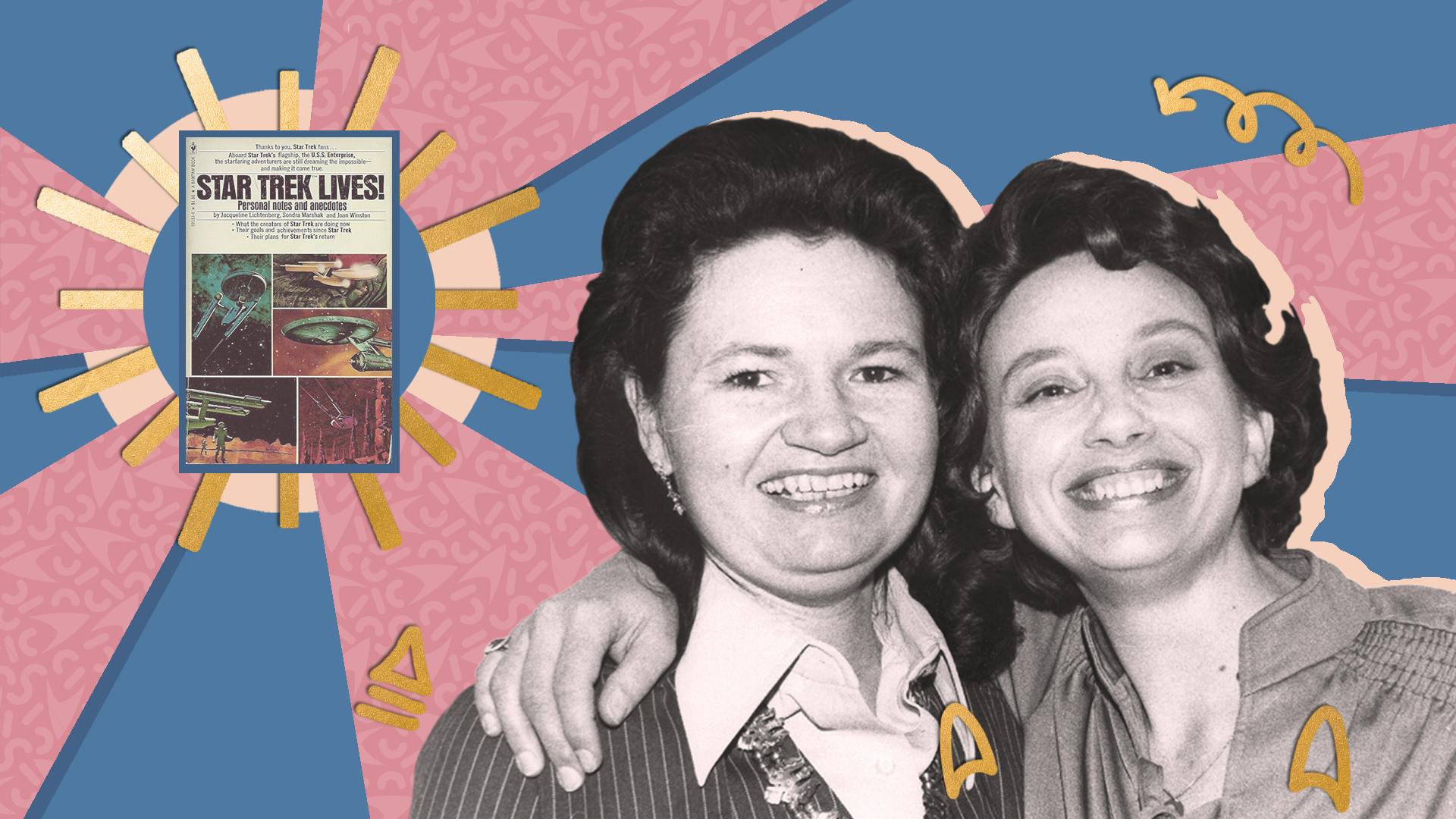
StarTrek.com
How did Star Trek survive?
I've always been fascinated by early Star Trek fandom. From to , fandom perpetuated and saved Star Trek from sinking into relative obscurity.
In the late '60s and early '70s, however, many Star Trek fans were isolated. This may be hard to comprehend in the internet age, but there was a time when Star Trek fans didn't know that other fans existed. Even for someone like me, who grew up in a small town in Kentucky during the '90s, it was hard to find and connect with fellow fans.
So, how did these early Trekkies do it?
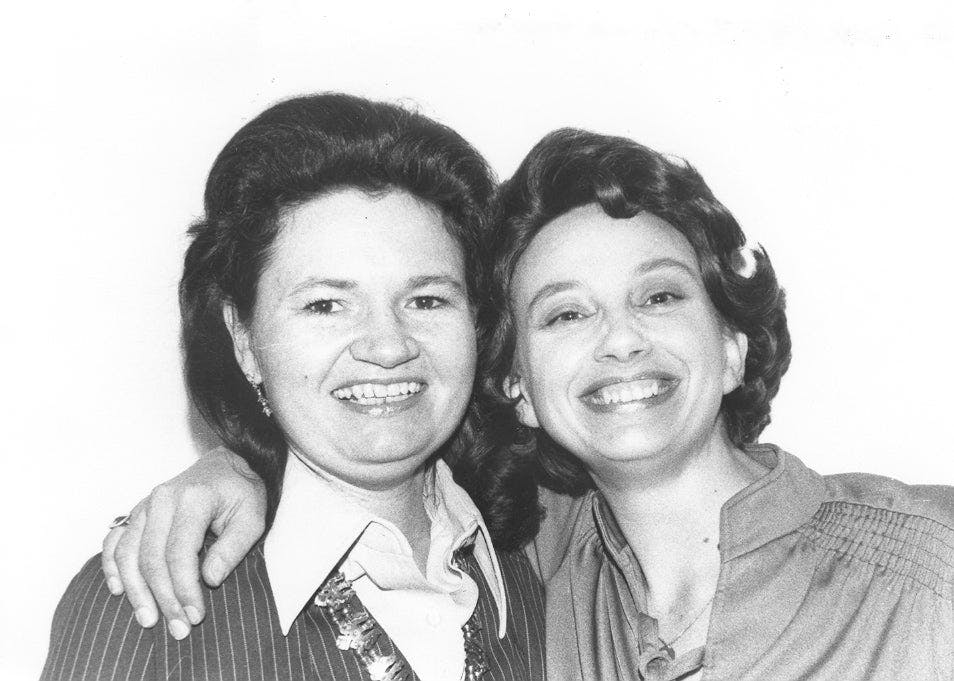
Jean Lorrah and Jacqueline Lichtenberg
StarTrek.com
This year marks the 45th anniversary of the publication of Star Trek Lives! It was, essentially, a how-to book, covering everything from conventions and clubs to zines and fanfic. It was hugely popular and had eight printings by Bantam Books between 1975 and 1979. Without a doubt, it gave many lost fans a roadmap to follow.
One of the writers of this book, Jacqueline Lichtenberg, created The Star Trek Welcommittee — with the blessing of Gene Roddenberry — in order to help newcomers connect. Lichtenberg also wrote "Spock's Affirmation," one of the earliest stories written for a fanzine based on characters from the show. Eventually, this developed into the first of the Kraith stories — a fan-created Star Trek storyline with multiple writers contributing through zines.
At a Star Trek convention in the mid-70s, Lichtenberg invited Jean Lorrah to collaborate on the third novel in the sci-fi series, Sime~Gen. Lorrah was also an early fan who contributed to fanzines and wrote a full-length fanfic novel (Night of the Twin Moons), before making the leap to writing for Star Trek professionally with books like Survivors, Metamorphosis, and The IDIC Epidemic.
I recently reached out to both Lichtenberg and Lorrah to see if they would answer a few questions about early Star Trek fandom, how women primarily led that movement, and how it has shaped modern-day fandom and Comic Cons.
StarTrek.com: Thank you for taking the time to answer a few questions. I'm fascinated by early Star Trek fandom and how it blossomed into what we have today. How do you think Star Trek Lives! shaped modern fandom?
Jean Lorrah: It showed people all over the U.S. who loved the show that they were not alone — that there were organized fans, and that they could join them. It was just an interesting read for many people, but for the double-dyed fans, it opened a world of connections to like-minded people at a time when such books still were found in libraries, so every copy reached many readers. For the first time, [it] showed them how to find one another.
Jacqueline Lichtenberg: I've often said — and I think it's still the most important thing we did —we blew the lid on fanfic.
In doing that, in telling the world that they can't do this to us; they can't take Star Trek away from us. They can't cancel us; they have no power over our imagination. We tore down walls for several generations to come to the gymnasium of the imagination where we share visions, articulate emotional wisdom, and become strong enough to "make it so" in everyday reality.
The "message," or theme, of Star Trek Lives! was simply, "You are not alone."
StarTrek.com: Do you remember the first Star Trek convention you went to? What was that experience like?
J. Lichtenberg: Technically, the first Star Trek con was a backyard BBQ with a few dozen people involved. I wasn't at that one, but knew the people involved.
I was at the first Star Trek con held in New York City at a hotel, and the story of that con is told by Joan Winston both in her short chapter in Star Trek Lives!, and in her book The Making of the Trek Conventions: Or, How to Throw a Party for 12,000 of Your Most Intimate Friends.
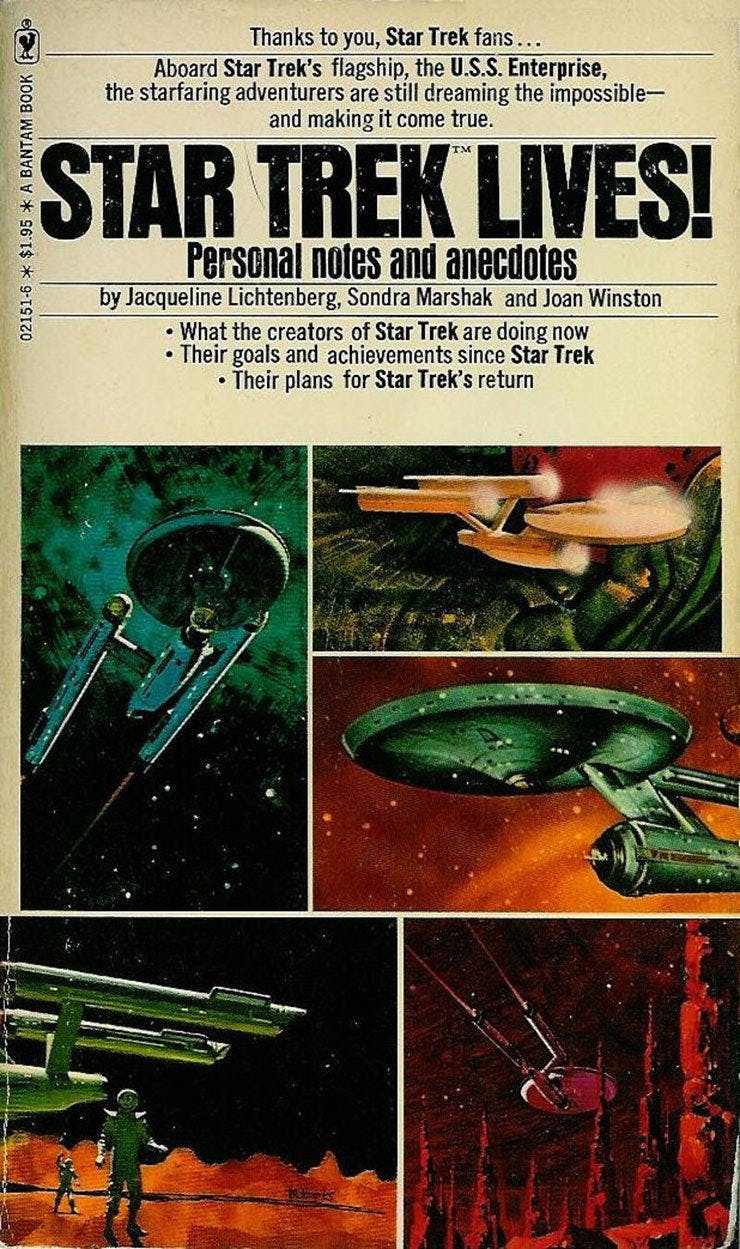
Star Trek Lives!
StarTrek.com
J. Lorrah: I'm pretty sure my first convention was a SequesterCon, a midwestern convention with no media guests, where creative fans sold their zines and artwork and Trek-themed crafts to one another and held panels about every imaginable aspect of Trek.
J. Lichtenberg: It was at the first con that I accosted Gene Roddenberry in a hallway, told him about Star Trek Lives!, and asked if he'd write a forward to it if I could sell it. He said yes and gave me his home phone number. Eventually, I called and said the publisher bought it and [asked if he] would do the intro. He sent it to me right away.
J. Lorrah: We were such nerds, and primarily female. There have always been men in Trek fandom, but to be in this [part of the] creative fandom, they had to understand that women ran the show. That was not a rule — it simply was that way, as in zine fandom, women outnumbered men by about ten-to-one.
I had been purchasing zines individually, [and] seeing ads in the ones I got hold of that let me find another one or two. But I went home from that convention with as many zines as I could fit into my luggage. The next year, I came back with a complete draft of The Night of the Twin Moons. It was my kind of con — where fans came to talk to one another, not to crowd into auditoriums and corridors to hear and get autographs from actors.
StarTrek.com: It seems like many of the people involved in and leading the fan movement in the late 60s and early 70s were women. Why do you think that is? Do you think it was important for women to take the lead in the area of fandom?
J. Lorrah: Absolutely! Within Trek fandom, women were the creators they were rarely allowed to be elsewhere. Women created Trek fandom, which eventually morphed into media fandom. It was our little world, with no need to ask permission of men to do what we did there. Heck, we were Amazons on our own little island! And media fandom, to this day, is a female-dominated world.
J. Lichtenberg: This is what most people don't understand about fandom. The word fandom comes from "fanatic" and "kingdom." [It] essentially designates a place that has no physical location.
Science Fiction fandom existed entirely on paper by snail mail and at cons. [The cons] might be the same weekend every year but rarely in the same hotel, or same city — but the people were the same. Anyone, literally anyone, a grammar school-age kid even, could start a fanzine, and even win a Hugo Award for it. Anyone could start a con, and it would be reviewed and reported on in dozens of zines.
Today, this amorphous, but well-defined, association of people exists online and spreads across countries. But [back] then, it was on-paper and rarely by telephone.
Anyone can do anything. You don't need permission. You don't need to be selected or elected or anointed.
StarTrek.com: I love Joan Winston's chapter about visiting the set of The Original Series and attending the final cast party. It’s more than 50 years later and I'm even jealous reading about that! Did you have any personal connections with the Original Series cast? Are there any stand-out moments that you remember?
J. Lichtenberg: I didn't know any of the cast and crew before the cons. After a few years of several cons a year, at which I was included with the guests, hanging out in the green room or guest lounge, behind security lines, doing autographing, etc. I got to know most of them, and some of them remembered me from year to year.
J. Lorrah: Con-going over the years, eventually as a guest myself with my pro Trek novels, I met George Takei, Walter Koenig, Majel Barrett, and Mark Lenard. The latter, it turned out, had been asked to autograph so many of my Sarek and Amanda zines through the years that he had finally read them.
He told me, "I was a little bit afraid to meet you!" Later, after he got over talking with the woman who had sexualized his character, he confessed that my stories had influenced his later portrayals of Sarek in the films.
J. Lichtenberg: In 1976, Joan Winston and I took a road trip together. We had roomed together at a bunch of cons, and sometimes I'd pick her up at her Manhattan apartment to drive her to a con and back. So that year, Robert Heinlein was guest of honor at Worldcon in Kansas City, and Joanie and I planned a big summer tour for Star Trek Lives!
I had dedicated my first novel, House of Zeor, to Heinlein, so I particularly wanted to give him an autographed copy of it. He had a deal going with the con — give blood at the bloodmobile, get a pin for your badge, stand in line, and get his autograph. He'd autograph only for donors.
I did that and stood in line, and instead of asking for his autograph, I gave him mine in a copy of my book. He later read the book, called me, and we had a nice chat. I was in the Science Fiction Writers of America directory, [so] he had my number.

Kraith Collected
StarTrek.com
On this 1976 trip, I had done a few cons before [where] I met Joanie at another [con] in Iowa, then we rented a car, drove to Kansas City, did Worldcon, flew to LA, rented a car, and visited Paramount Studios and Gene Roddenberry's office (where I found a copy of Kraith Collected on a coffee table, well dog-eared).
The best part of visiting the set on that trip happened in a nearby restaurant. We were sitting at a table when the waiter brought over a bottle of champagne that we had not ordered. Classically, [the waiter] pointed across the restaurant to Gene and some VIPs having lunch, [and said], "Complements of that gentleman." I still have the label.
StarTrek.com: From what I can tell, "Spock's Affirmation" was one of the first short stories published in a Star Trek fanzine based on characters from the show. This eventually evolved into the Kraith stories. I understand that it's a shared universe with multiple writers contributing, but can you tell me a little about that series and why you were inspired to start it? Was this type of fan fiction common at that time?
J. Lichtenberg: "Spock's Affirmation" is probably novella length and was written because earlier issues of T-Negative had intriguing fiction.
and T-Negative were two of the first Star Trek zines and had opposing editorial policies. Spockanalia was the home for those adhering strictly to facts established on the air — strictly to canon. T-Negative was the home for wild imagination, inspiration, and explanations involving made-up ideas that blended well with aired-Trek episodes.
I contributed an article to Spockanalia, not my first fanzine writing, mostly because I wanted a contributor's copy, but also because I was inspired by the style and quality of the writing in the first issues. Keep in mind, Spockanalia was intended to be a "one-shot" — being the only zine by that name, ever. Issue #2 was a surprise to the whole editorial crew.
Meanwhile — there's always a meanwhile in fandom — I was taking a course in commercial fiction writing. There were homework assignments, and dreary ones at that. So instead of following directions, I wrote Star Trek fanfic for the homework and sent the homework assignments to T-Negative for a free copy.
I was practicing ways to convey what it is about Star Trek that energizes so much creativity among the kind of people who don't follow leaders and don't lead followers, but [also] aren't loners. I was practicing for Sime~Gen, even though I'd already started selling Sime~Gen professionally. That ambition to practice turned into Kraith.
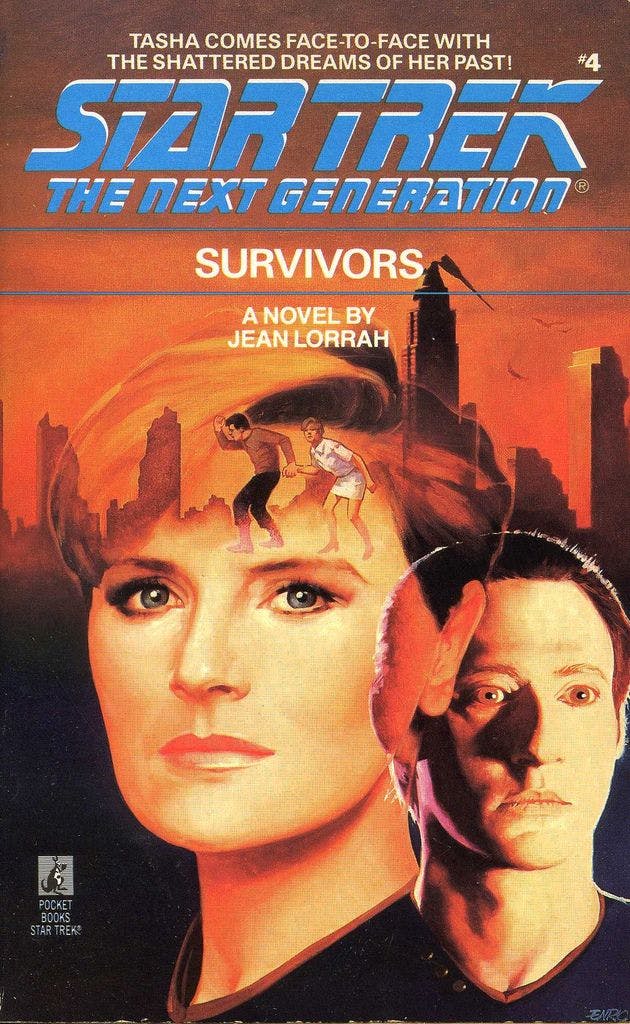
Star Trek: The Next Generation - Survivors: A Novel
StarTrek.com
StarTrek.com: Jean, you've written several professional Star Trek fiction books. How did you make that leap? Did you approach those publishers with your ideas? Or did they approach you first?
J. Lorrah: At the time, I first had ideas for pro Trek novels, they would only look at agented work from established science fiction writers. So once I had those credentials, my agent submitted the ideas. I didn't write the whole books until they were contracted, because by then, I was writing steadily in both Sime~Gen and my own Savage Empire series and didn't have time to write what would have turned into fanfic if rejected.
I wrote the prospectus for Survivors while Tasha Yar was still a continuing character, and it was rejected because they did not want to establish that much background on a continuing character. A week after Tasha died on-screen, Paramount contacted my agent and greenlighted the book!
StarTrek.com: What do you think about modern day Comic Cons? Are you happy with the way that they've grown, or do you wish they'd gone a different direction?
J. Lichtenberg: I'm happy with the way they've grown. The torch has been passed to the visual/audio media and the Superhero story — the story of an individual, starkly different from all others, dedicated to making things better for people who aren't so very similar to themselves. These are stories to inspire us to abandon the idea that once we've done all we can, we are finished doing, even if the task is not complete.
These are stories about exceeding the design specifications of the body, mind, and soul, and about choosing tasks that improve the world. The superhero is the science fiction hero.
StarTrek.com: What advice would you give to someone attending a Star Trek convention for the first time?
J. Lorrah: Meet and befriend other fans with your specific interests, and friend one another online. I would tell a zine fan to see if there is a convention-within-the-convention of like-minded creative types. To find them, go to the dealer's room and see if anyone is selling zines, new or used. Strike up a conversation and see if you get invited to private parties. But hey — we all know you're not going to meet any zine fans. We are a dying breed.
J. Lichtenberg: We are not a dying breed! We have moved to Comic Con, and to online sites like FanFiction.net.

